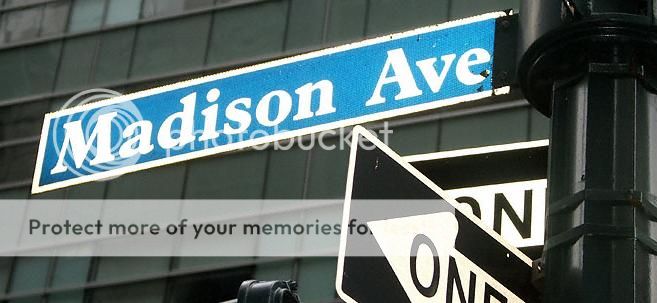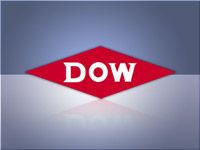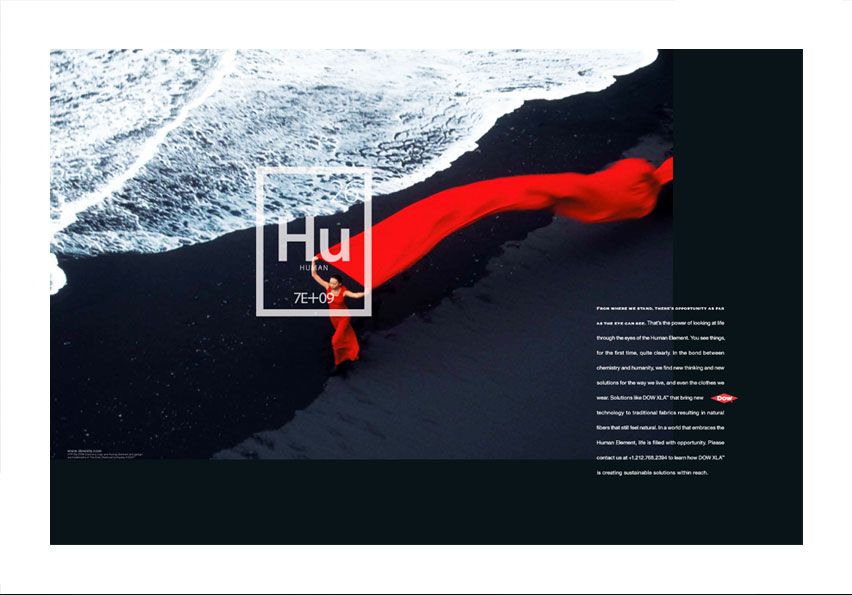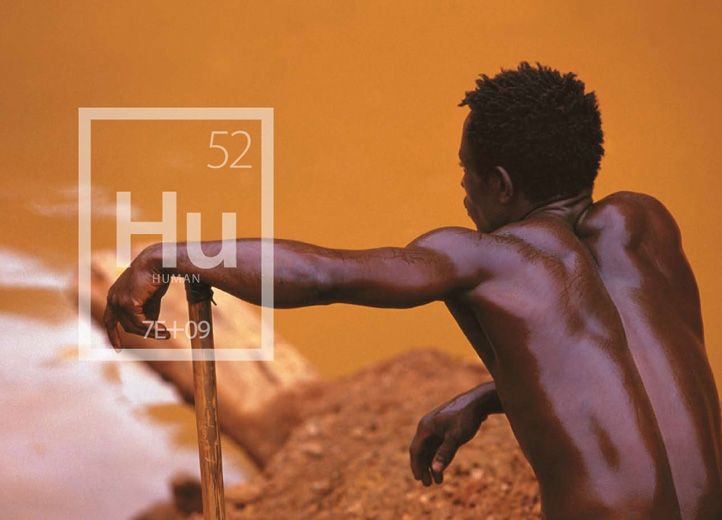
When it comes to the interface of art and science, in many ways Madison Avenue finds itself in the position of the early days of sci-fi entertainment, where campy, unrefined productions took decades to evolve into the sophisticated films and shows we enjoy today. To be brutally honest, 95% of current science and technology advertising ranges from hackneyed to terrible; unimaginative, uncreative, uninspired. But here at ScriptPhD.com, we want to focus on the superlative 5%. What makes these campaigns work, what elevates their content above the crowd and most importantly, how do they fit within the theme of the science or industry they are promoting? This is why we are expanding our umbrella of coverage—which has heretofore included film, television and media—to the final frontier: advertising. In our brand new series entitled “Selling Science Smartly,” we will profile the best that science and technology advertising (print, TV, radio, digital and everything in-between) has to offer. Where possible, we will interview the respective campaign’s agencies and creative teams to give you a rarely revealed behind-the-scenes purview into the process and foundation of making these ads. We are proud to launch the series with the exceptional Dow Human Element campaign, including an in-depth interview with Creative Director and mastermind John Claxton of Draftfcb Chicago. For the full article, please click “continue reading.”
Campaign: Dow Human Element (print, television, web)
Agency: Draftfcb Chicago
Industry: Chemistry

Originally founded in 1897 by Canadian-born chemist Herbert Henry Dow, Dow Chemical Company is the second-largest chemical manufacturer in the world. Their primary output is plastics, including familiar products such as Styrofoam, Saran Wrap and Ziplock bags, but they also produce agriculture and performance chemicals, as well as hydrocarbon and energy materials. In 2006, Dow hired advertising agency Draftfcb Chicago to rebrand its image, with a corporate focus on working together to apply science to improve the human condition. The campaign was called “The Human Element” and was the recipient of a 2008 Effie Award for Corporate Reputation, Image and Identity. ScriptPhD.com has chosen this campaign for our Selling Science Smartly series because we feel it embodies a perfect combination of creativity, risk-taking, effectiveness and uniqueness to represent science at its pinnacle. Take a look at some of the spots below:


All images and logos ©Dow Chemical Company, all rights reserved.
Why we like it:

How many times have you seen a formulaic pharmaceutical ad that could interchange virtually any product or drug without batting an eyelash? Or my personal pet peeve—a generic science ad with the now-standard happy researcher staring off into the sunset holding up a test tube of colorful liquid? These images are safe, boring, and ubiquitous. What makes The Human Element stand out is that it’s striking, gorgeous, poignant, different. The images within these ads are evocative, sensual, and they tell a story. The most recent versions of the campaign (pictured on the left) include the stunning photography of National Geographic photographer Steve McCurry. In advertising, the product is King and is showcased as such. However, in the case of science and technology, this leads to the same over-used imagery and tropes. It takes a lot of skill and bravery to attempt to tell a science story using abstract ideas, and I love that Draftfcb was willing to try. Because it has storytelling at its heart, this campaign is also malleable and adaptive to longevity, having just launched a series of supplementary web videos.
Why it’s good science advertising:

Dow is a chemical company. They make chemicals. Using chemistry. This is their central corporate identity, and no advertising campaign would be complete without using that as its foundation. With a logo representing a “missing” element of the periodic table, and copy evoking the language and reaction processes of chemistry, The Human Element campaign condenses the most basic substance of what Dow Chemical does. With that logo containing an atomic number representing the global human population, it becomes instantly intimate and conveys the idea that science serves to advance humanity. Aesthetics aside, it’s a functional piece of branding that concomitantly reminds us the history of what Dow Chemical was established to stand for and looks forward to what it can achieve in the future.
Why it works:
The Human Element struck me, in essence, as a corporate rehabillitation campaign, and it succeeded on that level. While it has given us some practical and even beneficial products, Dow cannot escape a litanny of environmental transgressions (Union Carbide disaster in Bhopal, India) and the shame of being the sole provider of Napalm during the Vietnam War. CEO Andrew Liveris has expressed firm commitment to continuing an environmentally-sustainable corporate strategy, which has included successful collaboration with The National Resources Defense Council and being named by the EPA as the 2008 ENERGY STAR Partner of the Year for excellence in energy management and reductions in greenhouse gas emissions. One year into this advertising campaign, not only did the stock price of Dow appreciate 29%, but more importantly, their brand-equity rating skyrocketed by 25%. Secondly, large corporations such as Dow, particularly those in manufacturing industries, are conflated by activists and even ordinary citizens with greed, arrogance, environmental insouciance, and downright evil, something ScriptPhD wrote about earlier this year. These highly adhesive visceral impressions can be difficult to break. The Human Element campaign shows a subtle awareness of this fact, and, by focusing on people and nature, humility. Finally, Sandy Colkey, Executive VP at Draftfcb and head of the Dow campaign, commented that the ads were also effective in recruiting green-minded chemists and scientists to Dow, which only reinforces and amplifies the purpose of this campaign to begin with.
What other science campaigns can learn from this one…
The scientist does not study nature because it is useful; he studies it because he delights in it, and he delights in it because it is beautiful. If nature were not beautiful, it would not be worth knowing, and if nature were not worth knowing, life would not be worth living. Of course I do not here speak of that beauty that strikes the senses, the beauty of qualities and appearances; not that I undervalue such beauty, far from it, but it has nothing to do with science; I mean that profounder beauty which comes from the harmonious order of the parts, and which a pure intelligence can grasp.
– Henri Poincaré, physicist, mathematician and science philosopher
In Selling Science Smartly, don’t be afraid to be beautiful, lyrical and poetic. Science is a tool that utilizes rigor, precision and experimental design to reflect the natural beauty and wonder that does and can surround us. Moreover, the most analytical, objective scientist still has to employ out-of-the box thinking to stumble on a new discovery or solve a difficult puzzle. Good advertising should strive to communicate that. One of the biggest weaknesses (and challenges) in science advertising is resisting the temptation to construct campaigns with the same linear process that science experiments are fundamentally built around. Infusing creativity, lyricism and a humanist perspective help to make these ads accessible and empathetic, all qualities achieved superbly by the Human Element spots.
Interview with Draftfcb Creative Director John Claxton
The Human Element campaign was conceived and crafted by Draftfcb Chicago, recently named by Advertising Age as Number 5 on their Agency A List. ScriptPhD.com was honored to speak with John Claxton, Creative Director of the Human Element campaign and author of the print ads and TV spots.
ScriptPhD.com: When Dow first came to you for this rebrand, what was their overarching objective?
John Claxton: A new CEO, Andrew Liveris, was just establishing himself and his philosophy at Dow. He had put a great deal of thought and effort behind his mantra for the company—making Dow the most respected chemical company in the world—and was anxious to make it a reality.
SPhD: How much of the Human Element and its message of empowerment did they have input in?
JC: As a creative idea, the Human Element came from us. But their eagerness to redefine the company and their clearly articulated business goals left no question about which direction to go in. Dow had carefully laid the foundation. We simply provided the creative idea to bring their vision to life.
SPhD: Take us through a couple of key steps of the creative development to help us conceptualize going from point zero (a blank slate, essentially) to the final product.
JC: One of the first steps was a creative meeting at our agency during the “pitch process.” I walked into the meeting with a new element for the Periodic Table. . . not carbon, hydrogen or oxygen, but the Human Element.
That pretty much put everything in motion. Including the Human Element on the Periodic Table of the Elements changed the way Dow looked at the world and the way the world looked at Dow.
Every creative decision we made from that point on was filtered through the lens of the Human Element, and that’s what took us down a very non-science approach to science advertising.
SPhD: Tell me a little about the strategy and aims of the written portion of the campaign (the copy).
JC: In terms of the strategy, we knew we wanted to find a “voice” for the campaign that lived at the other end of the spectrum from traditional science advertising.
There were three things that inspired the “voice” of the campaign we ultimately landed on. Science essays. The writing of E. O. Wilson. And contemporary American poetry.
SPhD: What was the biggest challenge for your team on this project?
JC: The television shoots are incredibly time-consuming (most of them a month or more) and span several continents.
SPhD: In retrospect, what surprised you the most about this campaign?
JC: We were completely surprised by the passionate response from people at all levels of society. From teachers to politicians to parents, people were so moved that they felt compelled to write to the company and express their feelings. The campaign struck a nerve in a way that we had never imagined.
SPhD: What do you feel makes branding science and technology a different or unique creative proposition?
JC: It is very difficult to make something abstract like science relevant to people, particularly in traditional media like television and print.
SPhD: What’s your favorite commercial or print ad of all time?
JC: I know this will seem like heresy, Jovana, but I really don’t study advertising. In fact, I don’t own a television. I read science essays. I study human behavior. I study and enjoy contemporary poetry.
We thank the wonderful, talented advertising team at Draftfcb Chicago, including Creative Director John Claxton and Communications Manager Joshua Dysart, for their cooperation and help in this installment of Selling Science Smartly.
~*ScriptPhD*~
*****************
ScriptPhD.com covers science and technology in entertainment, media and advertising. Hire our consulting company for creative content development.
Follow us on Twitter and our Facebook fan page. Subscribe to free email notifications of new posts on our home page.
]]>